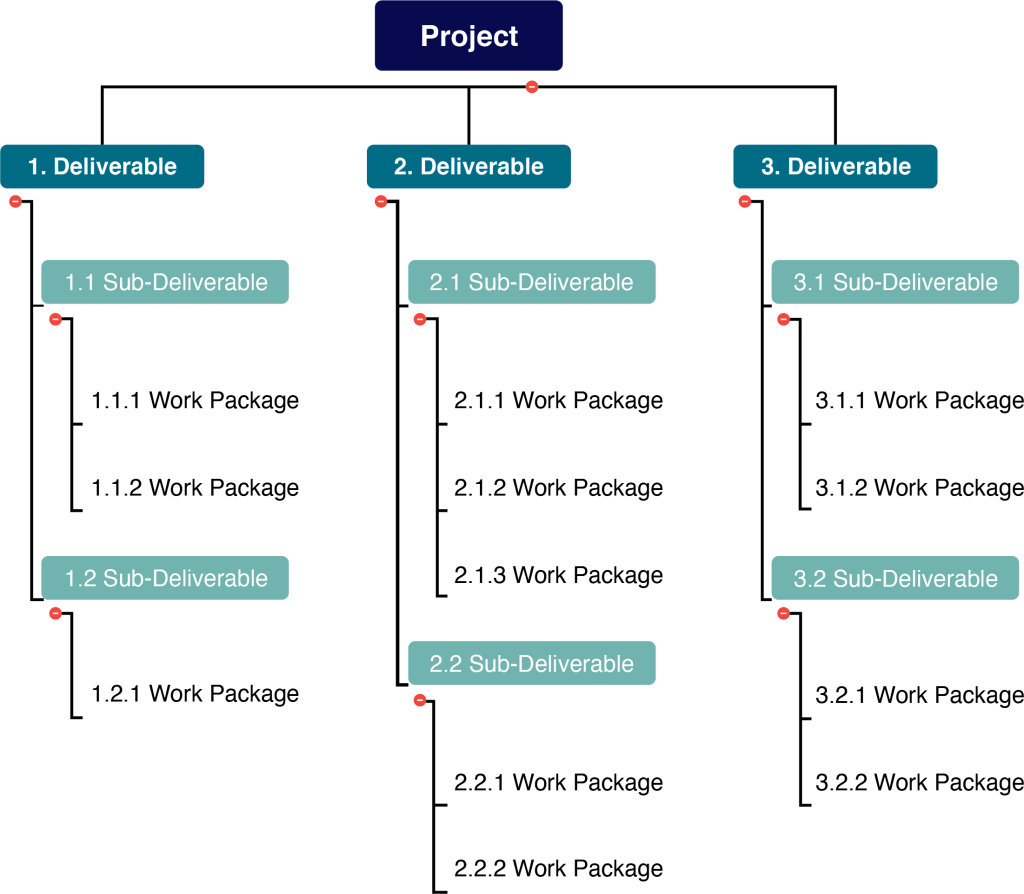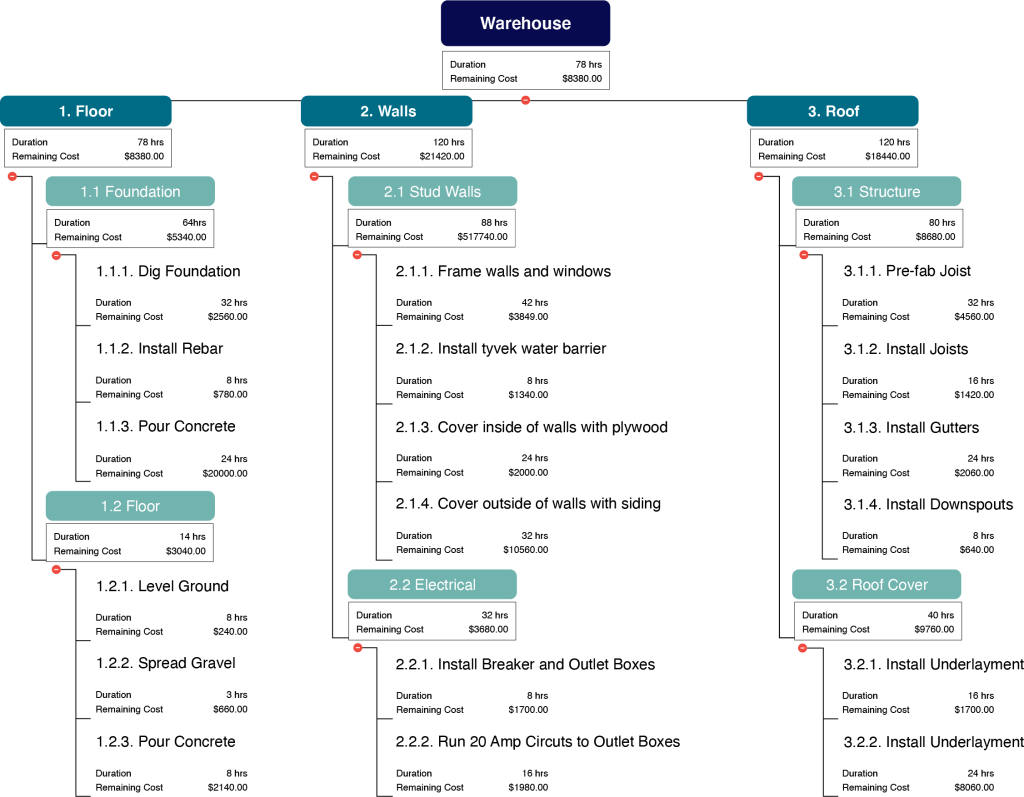3.10. Work Breakdown Structures
As an Office Administrator, it’s helpful to have a basic understanding of the Work Breakdown Structure (WBS). The WBS is a hierarchical outline of all the deliverables needed to complete a project. It’s one of the first steps in organizing and scheduling project work.
What is a WBS?
The WBS breaks down a project into smaller parts:
- Deliverables: Major items or outcomes of the project.
- Sub-deliverables: Smaller parts of the major deliverables.
- Work Packages: Specific tasks or units of work needed to create the deliverables.
The WBS helps summarize costs and labour for different parts of the project. It also helps decide if some tasks should be outsourced to specialists who can do them more cost-effectively.
Deliverables vs. Work Packages
- Deliverables: These are the main outputs of the project, like physical objects, software, or events.
- Work Packages: These are the tasks assigned to team members or contractors to create the deliverables. They are action-oriented and described with verbs.
WBS Numbering
Each item in the WBS is numbered to show its relationship to other items. This makes it easy to track the status of deliverables and work packages. For example, “Install Metal Roof” might be numbered 3.2.2, indicating it’s part of the third major deliverable (Roof: 3.), the second sub-deliverable (Roof Cover: 3.2.), and the second work package for the roof covering (3.2.2).


In the example in Figure 3.4, if the project manager can find a roofing contractor that completes the roof in less than 15 days (120 hours) and for less than $18,440, then it would be better to outsource that part of the project.
Note that work packages are independent of each other in a WBS, and do not summarize or include the work from other work packages. Work packages are the lowest level of the WBS.
The WBS Dictionary
The WBS dictionary provides detailed documentation about each work package, including;
- Who is responsible for completing the work package?
- What resources will be needed to complete the work package?
- What deliverable(s) is the work package contributing to?
- What deadlines or milestones are associated with this work package?
- What are the acceptance criteria for this work package?
When the WBS is created, not all of the information about the work packages is known (for example, the estimates for labour and material costs). Remember that the planning process continues throughout the execution of the project. As a result, the WBS dictionary is a “living document” that will be augmented, edited and updated as the project moves forward. figure 3.5 is an example of a WBS Dictionary entry; note that several items will be added later in the planning process. This is an example of a document you might be responsible for creating and distributing to your project team.

“5.4. Work Breakdown Structures” from Essentials of Project Management by Adam Farag is licensed under a Creative Commons Attribution-NonCommercial-ShareAlike 4.0 International License, except where otherwise noted.

